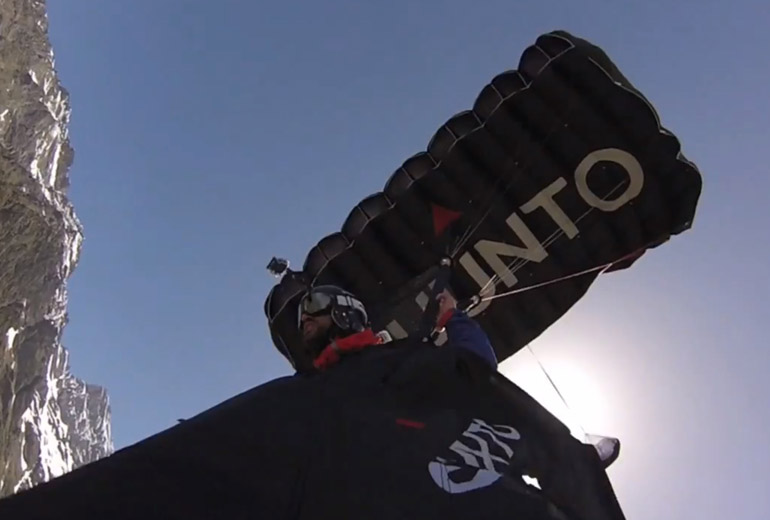This is a wingsuit flight you have to see. Patrick Kerber leaps from the summit of the Ochs at 3,895 m in the Bernese Oberland for a 185 km/h flight in the Swiss Alps.
Check out the video and prepare to be inspired.
But the jump is only part of the story. This wasn't just an extraordinary BASE jump. This was para-alpinism. To get to the take-off site, Kerber first had to had to climb over the Fiescherhorn (4,049 m).
After staying at the Mönchsjoch hut, he and partner Simon Wandeler set off at 4am.
“The hardest part was to climb and cross over on the Gross Fiescherhorn. There was lots of ice and snow it took eight hours of climbing to reach the exit point. The jump-off but was covered with a lot of snow,” he adds, “so we had to dig it all out and prepare it for a good push.”
What makes the jump unique is that Kerber did not have any external support and BASE jumped with all his gear.
“My goal was to approach this project only with my buddy and to fly all the gear that we brought up back down – that meant crampons, ice axe, harness, laser device to measure the jump, karabiners, ice screws etc. All this stuff had to find space in the suit and this is only possible with new pockets that are integrated in the wings.”

He adds: “This is though a big deal when it comes to aerodynamics. So after climbing up for quite some time and also getting tired, you have to make sure that all the technical aspects are correct too or the suit will not fly the right way.”
“When you plan a project like this, you can only take and bring the most important gear with you, but also enough to be always safe.”
Naturally, that included Kerber's Suunto Ambit2.